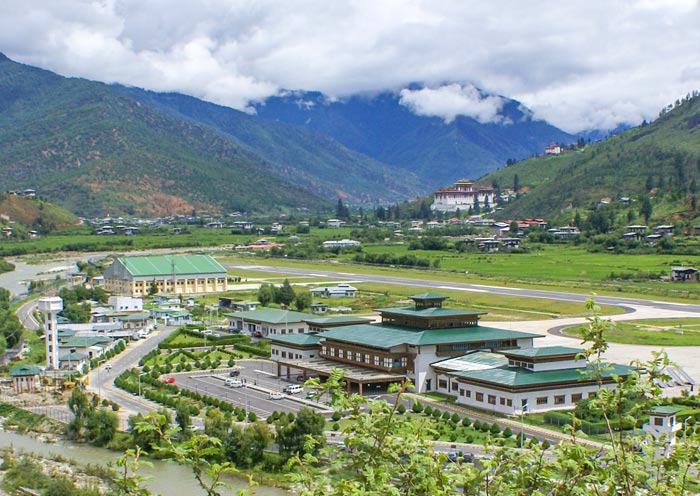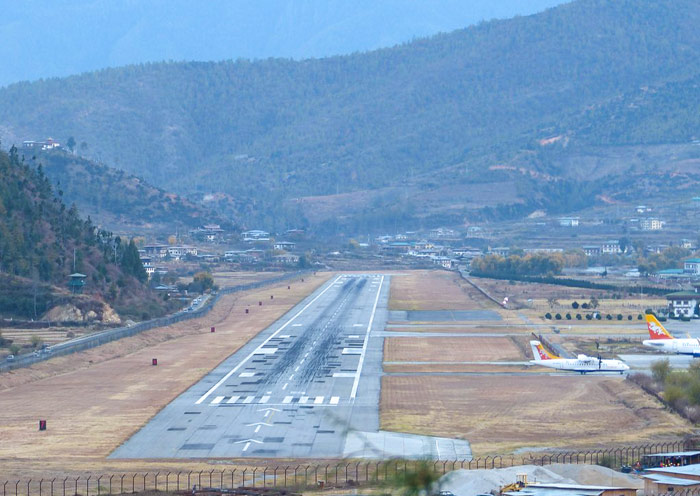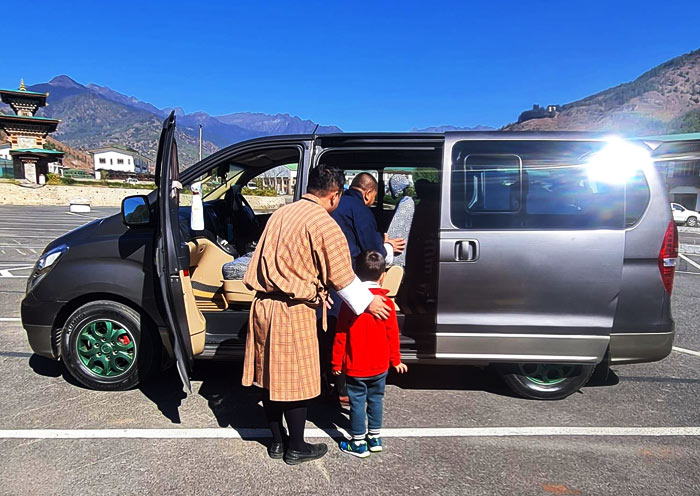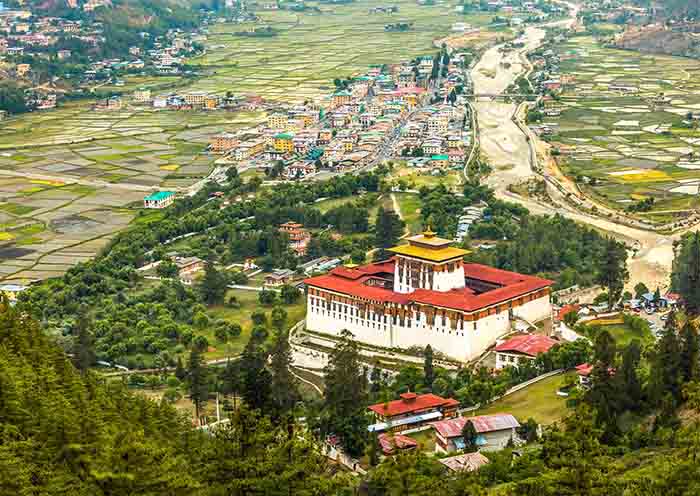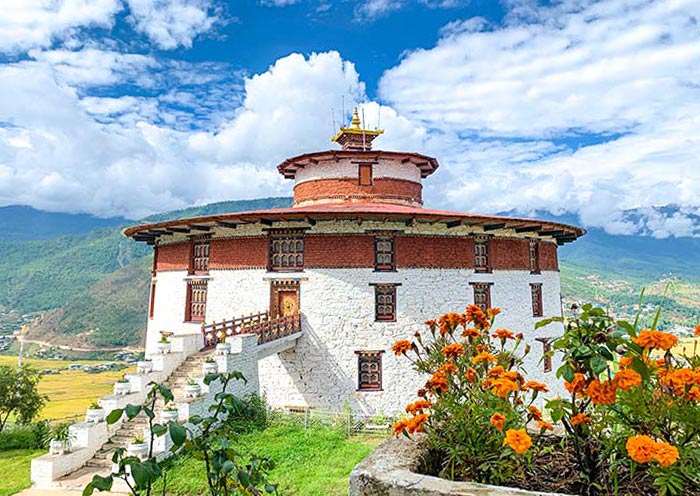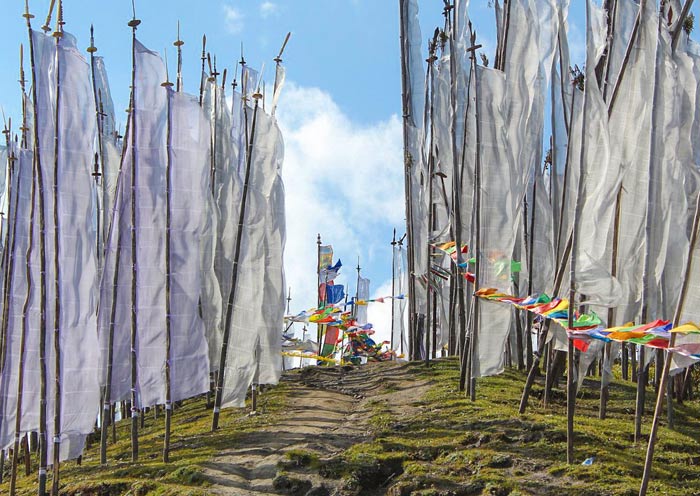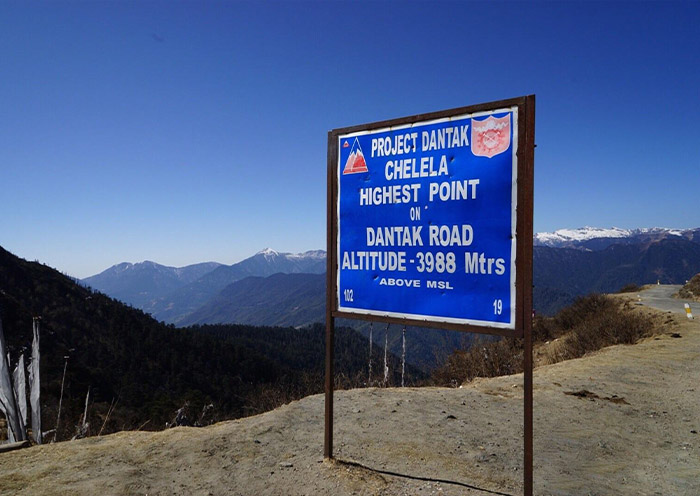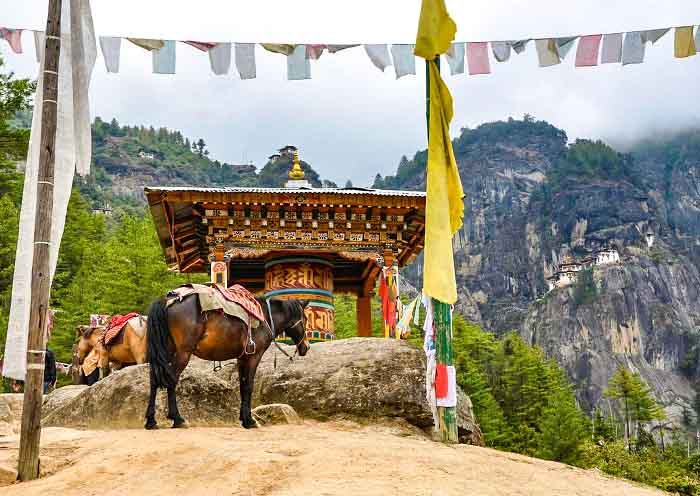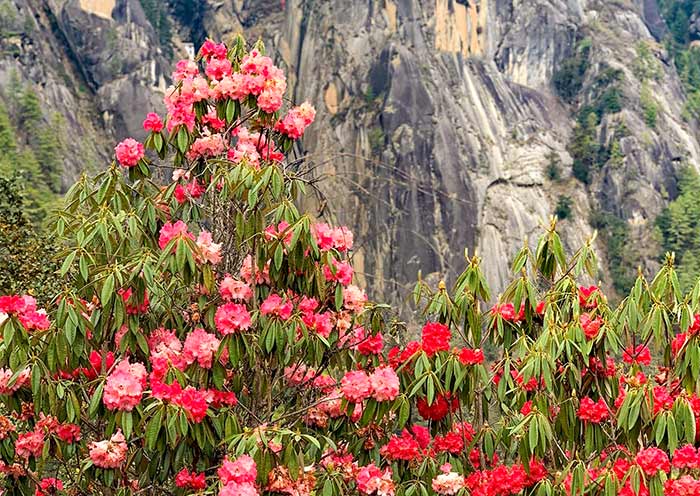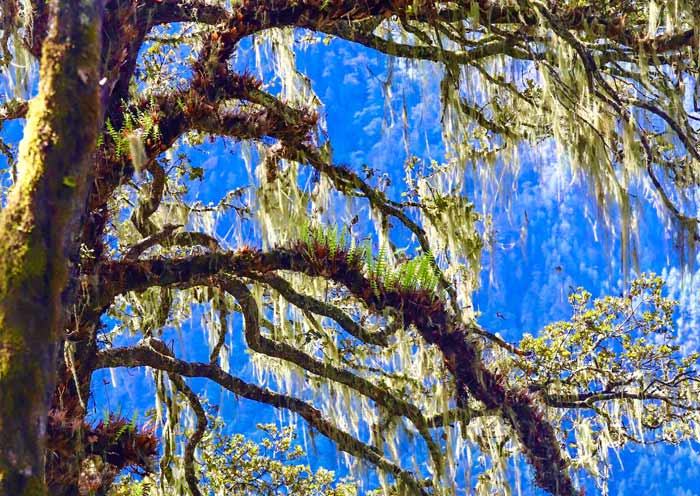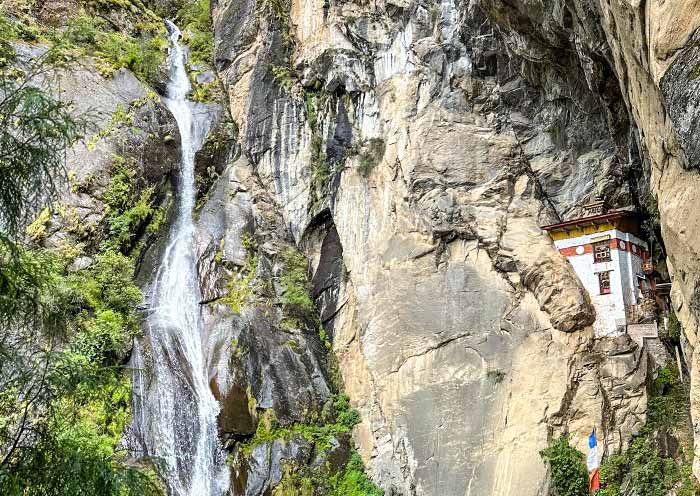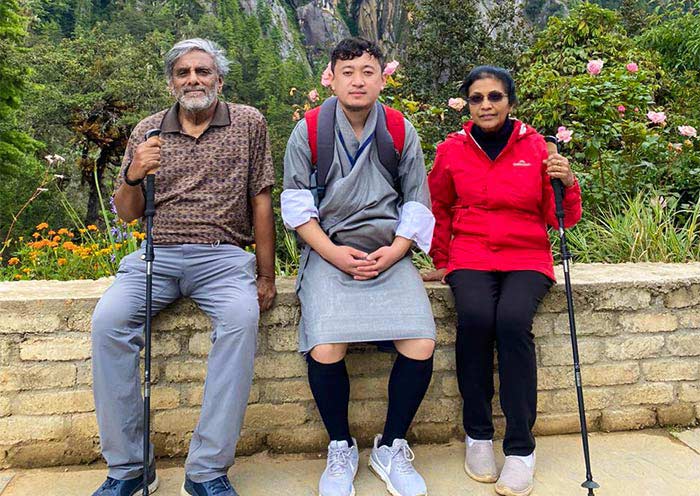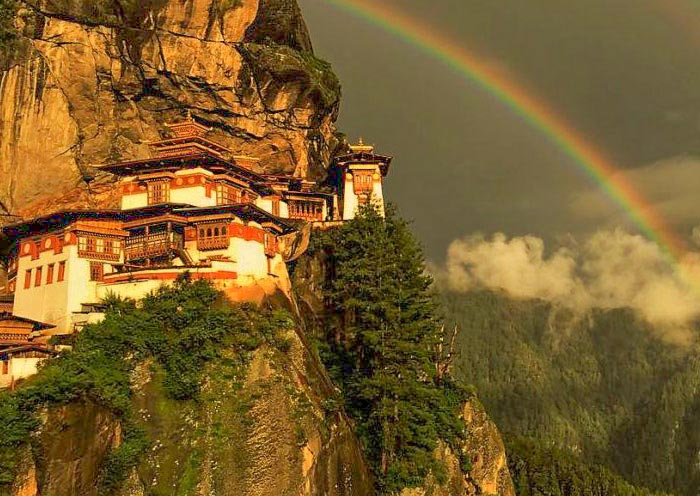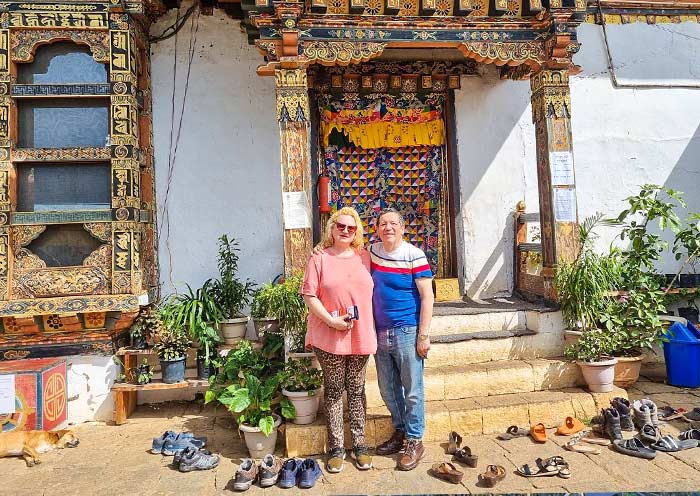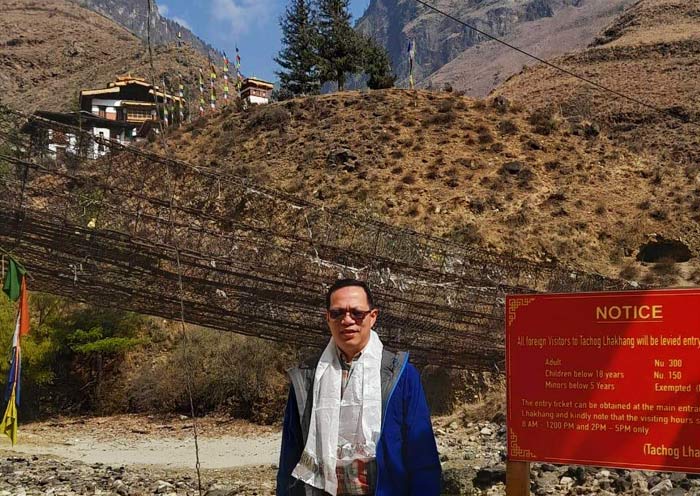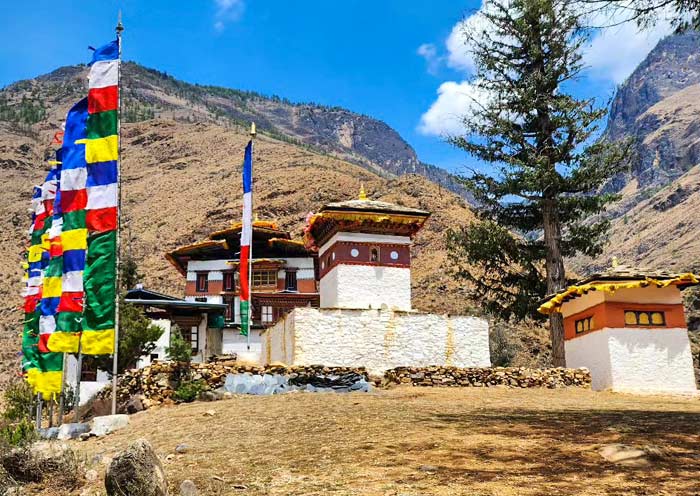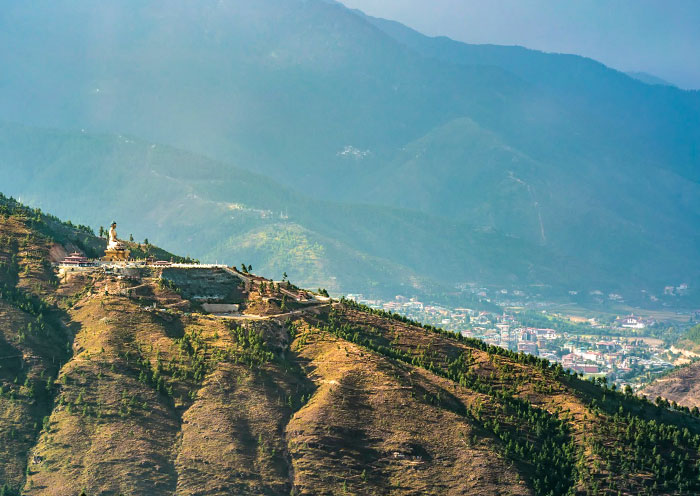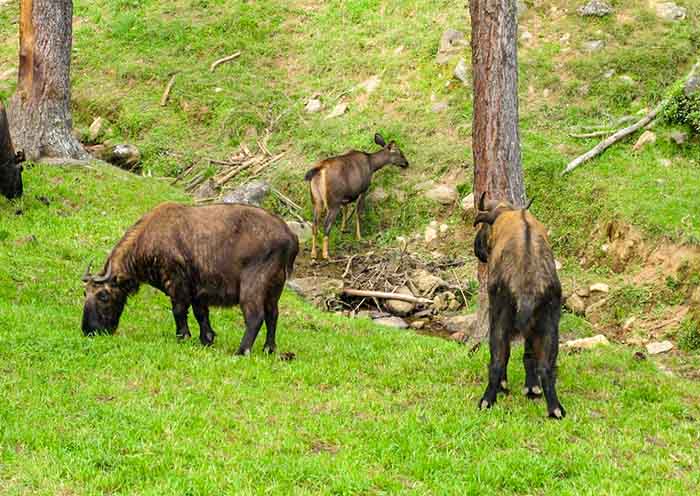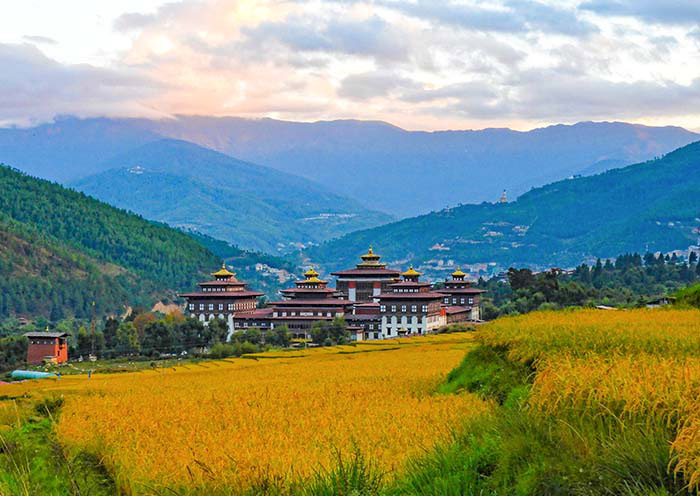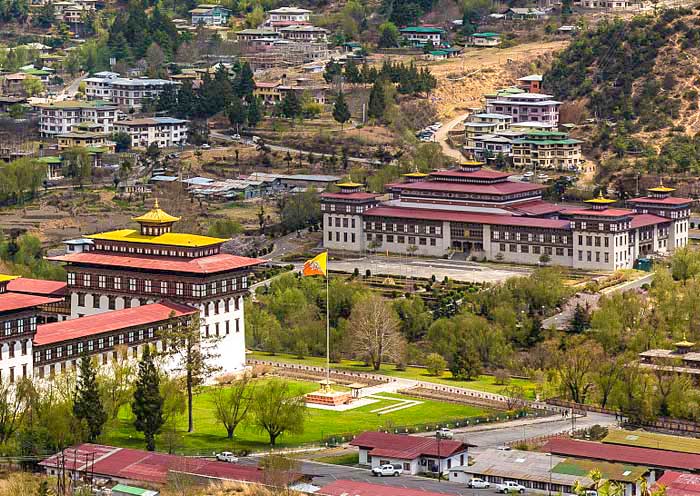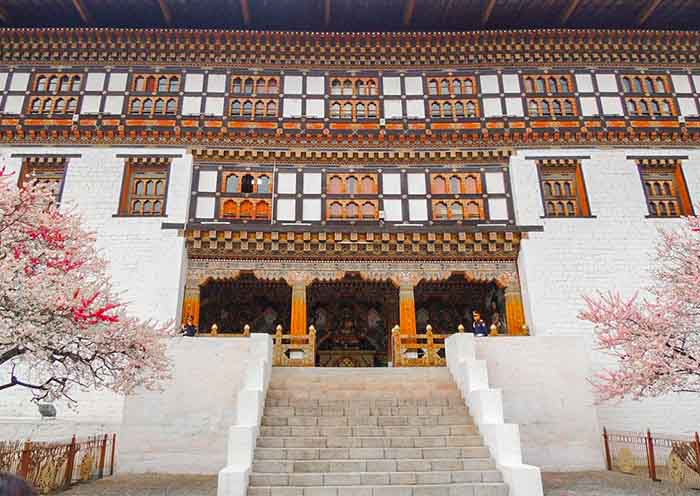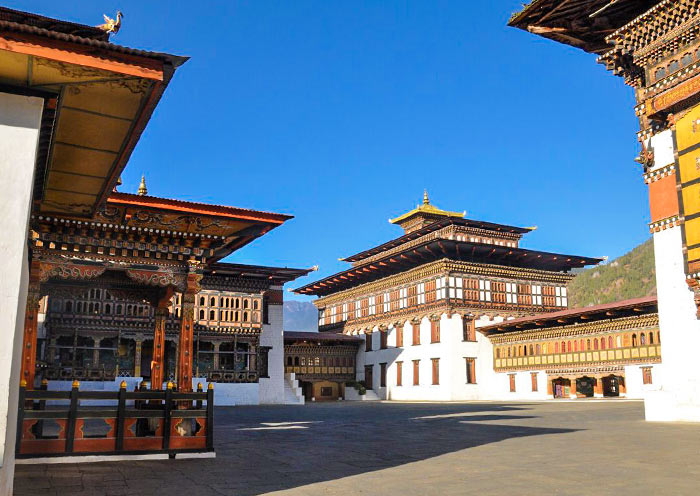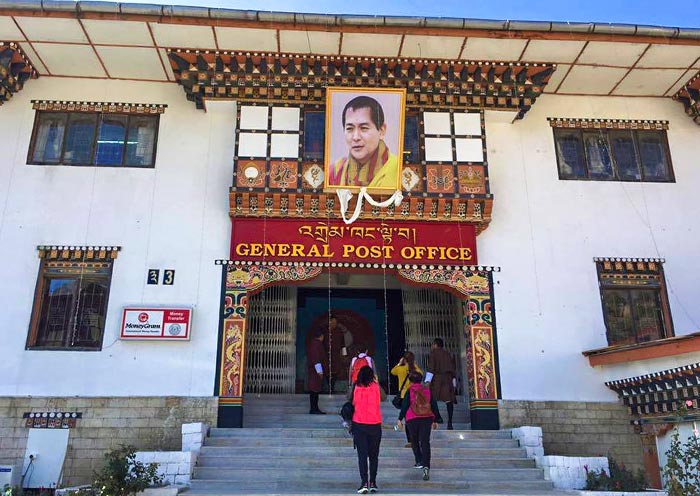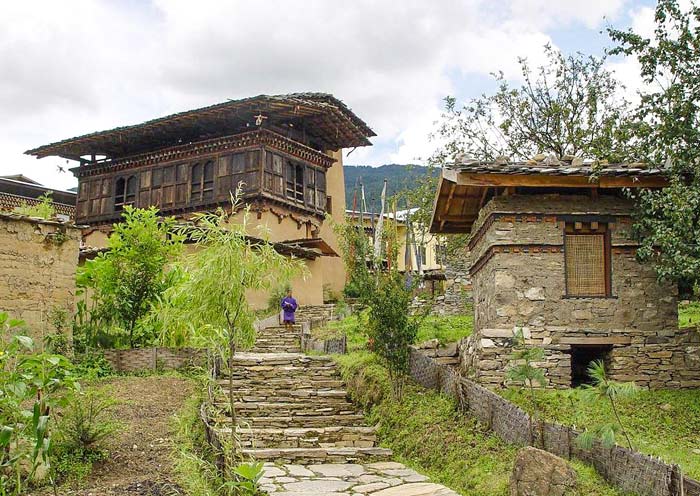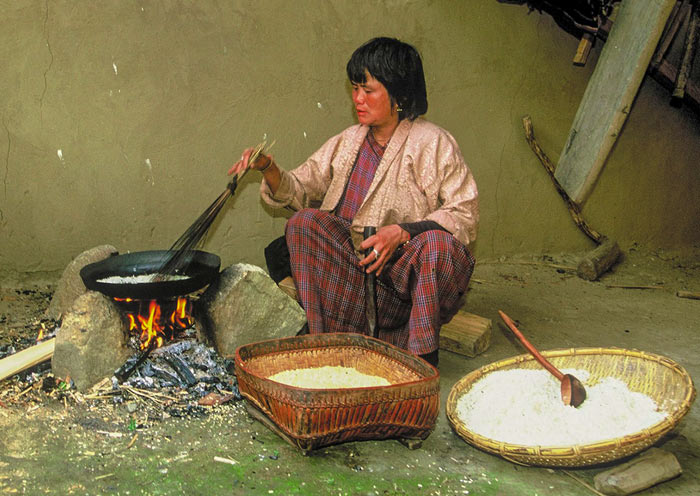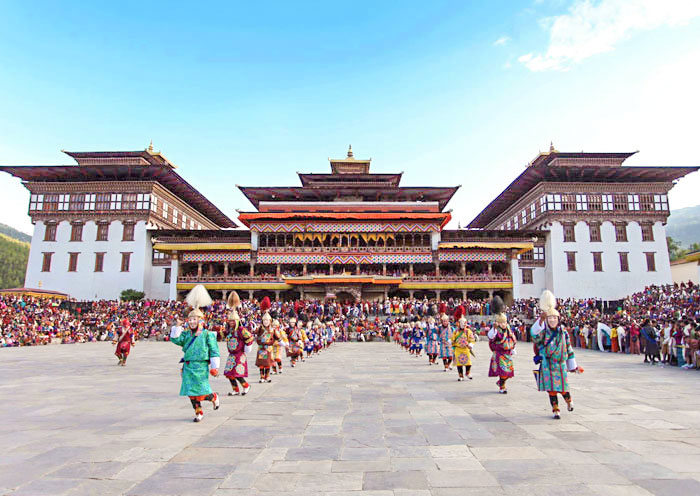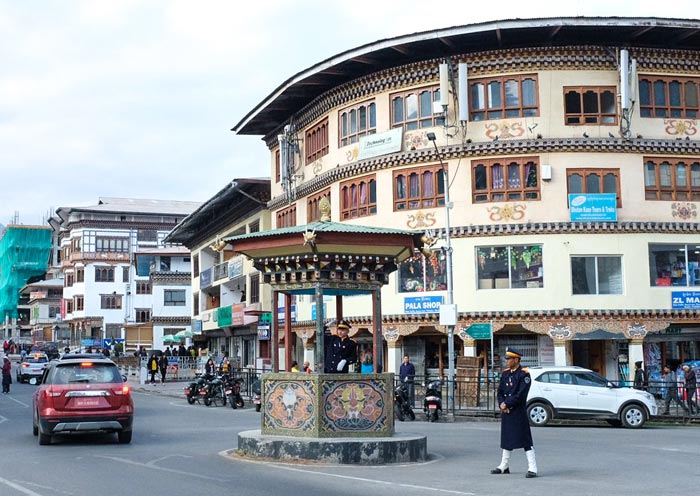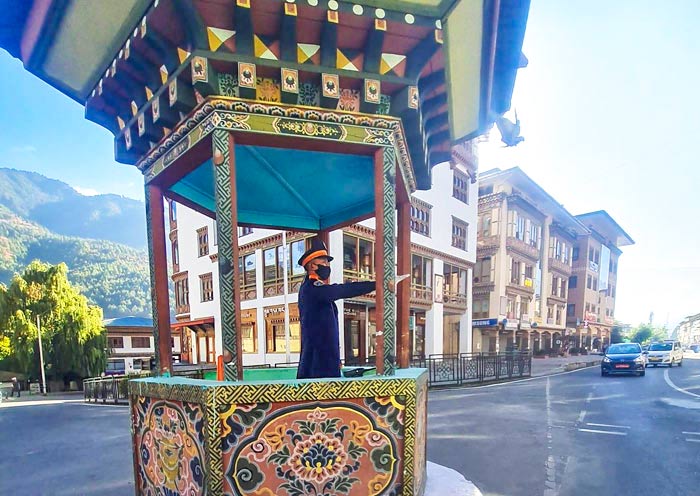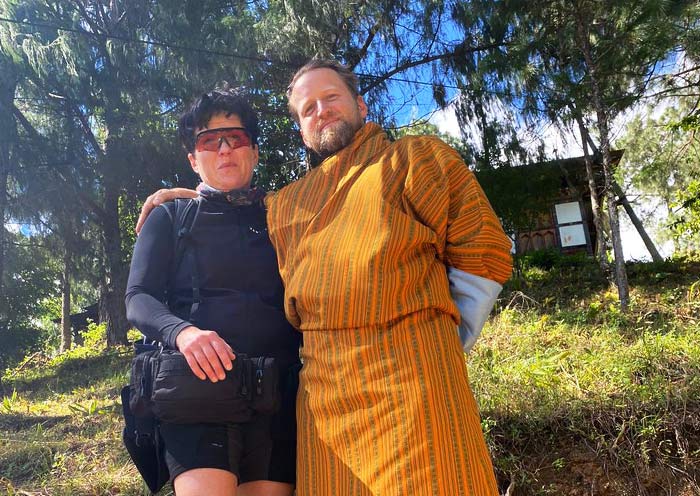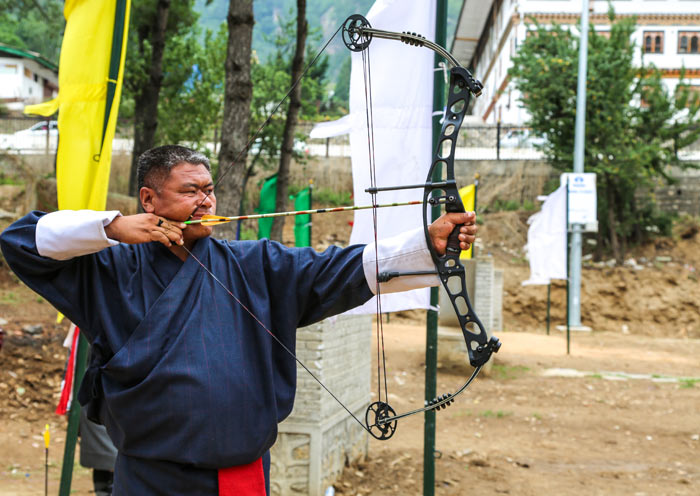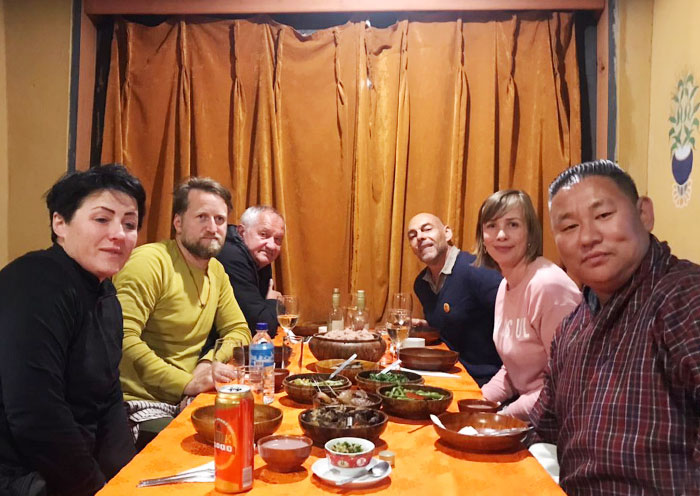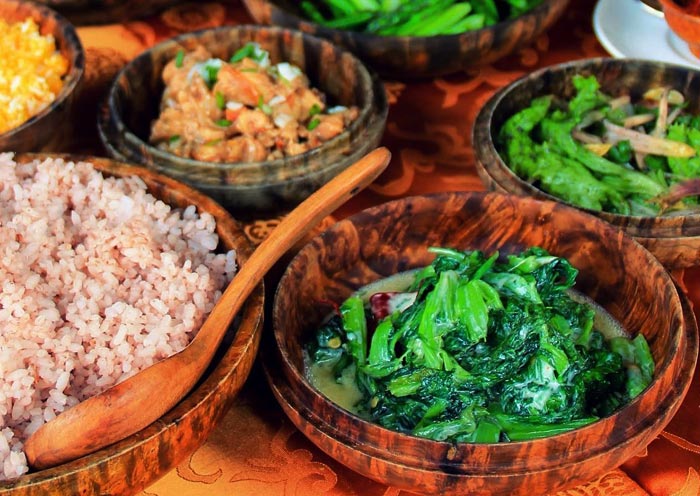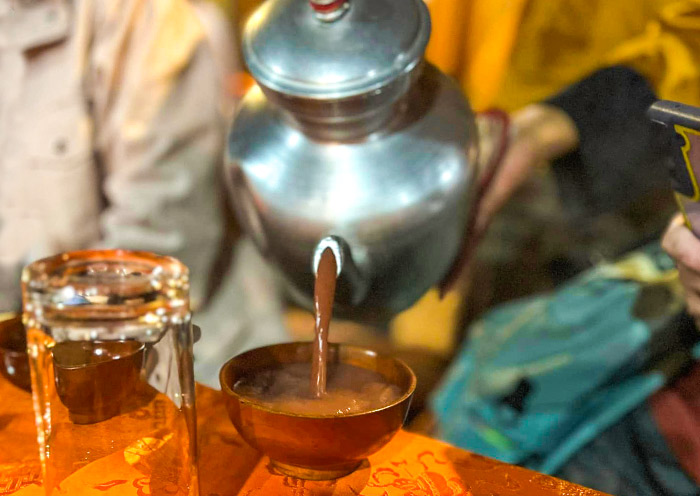- Highlights
- Itinerary
- Price
- Trip Notes
- Accommodation
- Photos
- Reviews
Why a Bhutan Tour from Delhi, India? Both India and Bhutan belong to the mystical Himalayan region. India is a vast and bustling country with a belief in Hinduism, while Bhutan is a small and serene country with a belief in Buddhism. Moreover, India and Bhutan are close neighbors with three borders open for tourists. There are daily direct flights from Delhi to Paro, Bhutan. So, when planning your tour to India, remember to include Bhutan, the Kingdom of Happiness, which opened its doors to the outside world in 1974. Take our 5 Days Incredible Bhutan Tour from Delhi to Paro, Haa & Thimphu, escape the hustle and bustle, and find peace in Bhutan through the Hidden Haa Valley.
Your 5 Days Bhutan Tour from India will cover Paro Valley, Haa Valley, and Thimphu Valley. You will visit top attractions of Bhutan such as Tiger's Nest (a landmark of Bhutan), Kyichu Lhakhang (built by King Songtsen Gampo), Mini Tiger’s Nest (Dzongdrakha Goempa), Chele La Pass (view Mt. Jomolhari, one of Bhutan's tallest peaks), Lhakhang Karpo & Nagpo (Built by King Songtsen Gampo), Thimphu Dzong (the Office of Bhutanese King), Buddha Point (panoramic view of Thimphu), National Memorial Chorten (memory of the Third King), and Folk Heritage Museum( Bhutanese way of life).
Enjoy your 4 Nights in Bhutan from Delhi to have authentic Bhutanese experiences without large crowds. Our 5 days Happy Bhutan Tour from India with Hidden Haa Valley will help you to understand Bhutan’s “High Value, Low Impact” philosophy. You will marvel at the unique culture of Bhutan, breathe in its carbon-negative fresh air, appreciate its eco-friendly environment, experience the diversity of flora and fauna, and immerse yourself in traditional Bhutanese arts.







Itinerary at a Glance
Delhi to Paro (2 Days)
Tiger's Nest Monastery (Taktsang Goemba, Paro Taktshang), Kyichu Lhakhang, Tamchog Lhakhang Iron Bridge
Haa (1 Day)
Mini Tiger's Nest (Dzongdrakha Goempa), Chele La Pass (Mt. Jomolhari), Lhakhang Karpo, Lhakhang Nagpo
Thimphu (2 Days)
Buddha Dordenma Statue, National Memorial Chorten, Tashichho Dzong (Thimphu Dzong), Motithang Takin Preserve, Folk Heritage Museum
Itinerary Day by Day
Tashi Delek! Welcome to Bhutan, the Last Shangri La in Pristine Himalayan Kingdom. Take a deep breath and enjoy the refreshing breeze in the happy country where 71% of the land is covered with forests. Your guide and driver in Paro will greet you at Paro International Airport, Bhutan's only international airport.
Paro (2,270m) is the first city for most guests to reach Bhutan. It is known for Tiger's Nest which makes Paro a must-visit destination in Bhutan. For nature and culture lovers, Paro is a picturesque place that combines spirituality, natural beauty, and cultural heritage. You may have the chance to attend the colorful annual Paro Tshechu Festival if you visit Paro in early to mid-March. The festival falls on the 10th day of the second lunar month of the Bhutanese calendar. In some years, the festival might start slightly earlier, around March 10th or 15th. The festival celebrates the birthday of Guru Rinpoche, a revered figure in Bhutanese Buddhism.
You will not miss a stop at the Paro Airport Birds Eye View Point on the way to you hotel, which is a great spot to enjoy a panorama view of Paro Airport, Rinpung Dzong (Paro Dzong), National Museum (Ta Dzong), Paro Chu River, and the stunning Paro Valley itself. Don't forget to ask your guide for more fascinating information about this remarkable airport. Afterward, you can check in at your cozy hotel, where you can rest and acclimate yourself to any time difference.
Base on flight reach Paro Airport before noon, if time permits, you can ask your guide to take you to Rinpung Dzong (Paro Dzong) and Bhutan National Museum (Ta Dzong) as the first destinations (self-pay for the tickets). Please note that Paro Dzong is open from 9 AM to 5 PM on weekdays and from 10 AM to 4 PM on weekends. It is required to have a tour guide accompany you when visiting the Dzongs. Before entering for a visit, security checks will be conducted. The Bhutan National Museum opens from 9 AM to 5 PM.
Free Time Ideas:
1. Visit Paro Local Market: Why not dress in Bhutan's National attire to visit the Paro Local Market? Check what Bhutanese eat for their daily life? What is include in Bhutan Dishes? Colorful Chili peppers, dry cheese, potatoes, apples...
2. Try Bhutan National Game (self-pay for the fee): Archery is the favorite pastime for Bhutanese. It has a history of over 2,000 years and was declared Bhutan's National Sport in 1971. Targets at traditional Bhutanese tournaments are placed at both ends of a 140m range (Olympic distance is 70m). Enjoy your time by holding a bow and arrow.
3. Bhutanese Wood Turning (Shagzo): Visit a small factory specializing in produce bowls (dapa), cups (dza phob), plates, and containers ranging a wide gamut of shapes, sizes, and colors. These products are crafted from special wood burls and tree roots found in Bhutan. Traditionally, wooden bowls and cups are used to serve food in Bhutanese households.
Feel free to contact your guide in advance for more travel advice and tips tailored to your interests.
Arrival Ideas:
Paro International Airport, with the airport code PBH, is Bhutan's sole international airport. Approximately 30,000 people arrive at Paro Airport each year. The easiest and most convenient way to travel from Delhi to Bhutan is by air. Bhutan Airlines and Drukair are the only two Bhutanese airlines offering daily direct flights between Delhi and Paro. The flight duration is approximately 2 hours and 20 minutes, covering a distance of 1221 kilometers. Some indirect flights from Delhi to Paro (via Nepal) take around 3 hours and 30 minutes, including waiting time at Kathmandu's Tribhuvan International Airport. The flight schedule from Indira Gandhi International Airport (DEL), the largest airport in India based in Delhi, to Paro International Airport (PBH) may vary depending on the month. There are also daily direct flights between Kolkata and Paro. Drukair typically operates daily flights, while Bhutan Airlines has a lower frequency. Additionally, you can choose to take flights from major Indian cities such as Gaya, Bagdogra, Kolkata, Mumbai, and Guwahati to Paro.
Entering Bhutan from India by Road:
There are 3 borders between Bhutan and India that are open for tourists. The most common way to enter Bhutan from India by road is from Jaigaon town in West Bengal, which is only 4.3 kilometers from the Phuentsholing border town, Bhutan. From Delhi to Phuentsholing, it is over 1,600 kilometers by road, which will take around 27 hours of continuous driving. You can take a flight to Bagdogra, India, and then hire a cab to Phuentsholing. Other border crossing points from India to Bhutan can be found at Gelephu border (Bongaigaon) and Samdrup Jongkhar border (Darangamela), but they are much further away than the Phuentsholing border (Jaigaon).
Kind Reminds:
1.You can contact us to book your flight to Paro from India and land directly in Bhutan.
2. Visitors of all nationalities, except those from India (require a permit), require an E-visa (40USD/pax) before entering Bhutan. All nationalities are welcome to visit Bhutan, and there are no specific restrictions on granting visas to enter the country.
3. Visitors from India are able to apply for a permit but are required to hold an Indian passport or an Indian voter ID card.
4. Visitors from Bangladesh and the Maldives also require a visa, which can be applied for and approved in advance of travel or upon arrival in Bhutan.


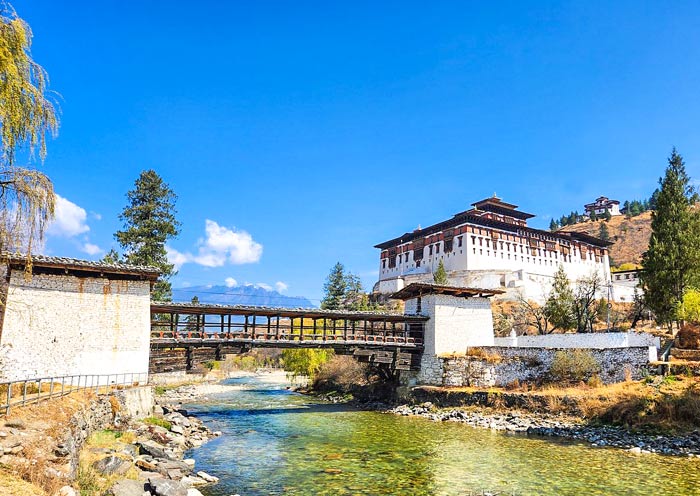

After breakfast, depart Paro (2,270m) and start a scenic drive to Haa (70km, 2.5 h), the "Hidden-land Rice Valley" and the westernmost Dzong of Bhutan. Unlike many popular tourist destinations in Bhutan, Haa Valley remains delightfully untouched, preserving its serene atmosphere and traditional way of life. It is highly recommended for nature enthusiasts and trekkers seeking a beautiful destination. Here, you won't encounter hordes of crowds but rather the gentle whispers of the wind and the rhythmic clang of prayer flags.
First, you will pay a visit to Mini Tiger's Nest (Dzongdrakha Goempa or Dzongdrakha Monastery), which is a temple complex nestled on the cliffs of the western side of the Paro Valley. Constructed in the 16th century by the local ruler Chogay Dragpa, legend has it that Guru Rinpoche, the revered Buddhist master, first landed at Drakarpo, then Dzongdrakha, before reaching the famous Paro Taktshang (Tiger's Nest). With its strategic location providing a splendid view of the Paro Bondey valley, Dzongdrakha Monastery is often regarded as the second Tiger's Nest. Make sure to explore the cave where Drubthog Gyonpo Dorji, the founder of the Lhakhang, meditated, as it holds great significance. From Mini Tiger's Nest, you may also have the chance to see the plane that heads or departs Paro Airport.
Then, head to the renowned Chele La Pass, a majestic mountain pass situated at an impressive altitude of 3,998 meters. Spanning between Haa (2,220m) and Paro Valley, it is the highest point along Bhutan's roads. From this elevated position, breathtaking panoramic views of the surrounding landscapes await you. Clear weather may even give you a glimpse of Jomolhari, one of Bhutan's tallest peak, soaring proudly at 7,326 meters. If lucky, you may meet local people change the prayer flags and pray for their family at the Chele La Pass. It is also a good place to have a coffee break.
Descending from the mountain pass, on the way to Haa Valley, you can view Haa Dzong (Wangchuk Lo Dzong), an administrative center constructed after the destruction of the old Danzong in 1915. Currently serving as the headquarters for IMTRAT, it also houses a military school & a military hospital.
After the winding road, you will reach Lhakhang Karpo and Lhakhang Nagpo. According to legend, in the 7th century, King Songtsen Gampo of Tibet achieved the incredible feat of constructing 108 temples within a single day. Among these temples were the White Temple and the Black Temple. These sacred structures were erected to safeguard the people residing in Haa Valley. The tale tells that during the temple's construction, King Songtsen Gampo released two doves, one black and one white, from his consciousness. These doves were believed to guide him to the most promising locations for building the temples.
Your first stop will be a visit to Lhakhang Karpo, also known as the White Temple. It is nestled at the base of three magnificent peaks located to the south of Haa Valley, where you can observe white pigeons finding refuge. During the Haa Summer Festival, which typically takes place in July each year, you may have the chance to see religious performances here. Some of our tourists have seen trumpets made from human thigh bones (Buddhist ritual objects) in this temple.
Next, continue your trip to Lhakhang Nagpo, the Black Temple, which can be reached by a 10-minute walk from north of the White Temple. This location was selected by black pigeons. Lhakhang Nagpo, built on a lake, derives its name from the color black and is surrounded by serene greenery and dense forests.
After a stroll around Haa town, head back to Paro for overnight.

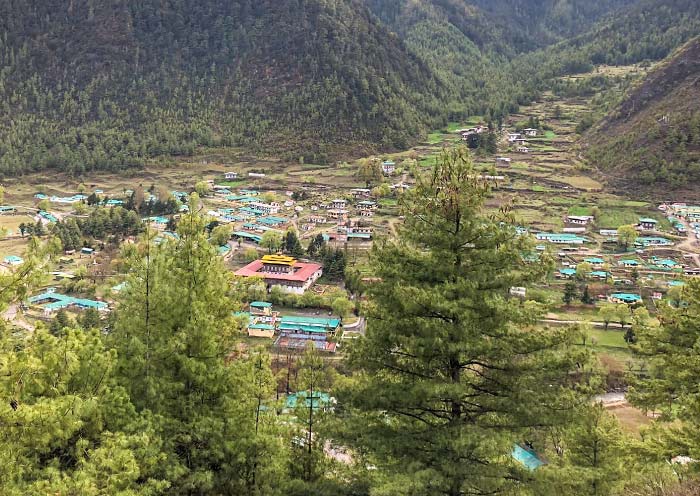
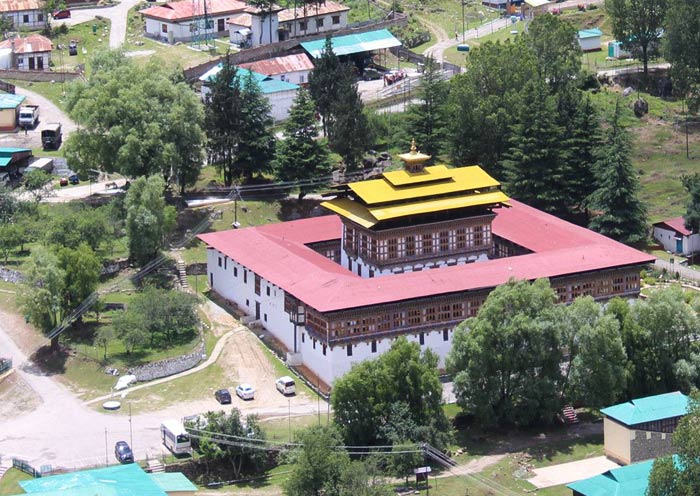

This morning, you will get ready to start the exciting hiking tour to Tiger's Nest, the landmark of Bhutan and the most famous holy monastery in the country. It is about a 12km drive (over 0.5 hour) from Paro city to the start point of the Tiger's Nest hike route.
Usually, it may takes about 2.5 hours to reach Tiger's Nest Monastery (Paro Taktsang) on foot. The entire Tiger's Nest Hike takes around 5 to 6 hours, with about 4.8km of uphill trekking and about 4.8km of downhill walking. You have the option to rent a horse at the designated place if you prefer. Riding a horse (self-payment required), it takes about 1.5 hours to reach the halfway point on the mountainside. From there, you need to say goodbye to your horse and hike for another 1.5 hours to reach the Tiger's Nest Monastery. At the halfway point, there is a Taktsang Cafeteria where you can have a buffet lunch and enjoy coffee and tea. What is more it is the first viewpoint where you can look up at Tiger's Nest Monastery, the incredible religious site of Buddhists. As the viewing position ascends, the outline of Tiger's Nest Monastery becomes increasingly clear. On the journey ahead, you can enjoy the hike in Bhutan’s forest and will see more and more prayer flags and prayer wheels, left behind by the Bhutanese people who come here to worship. You will also have a panoramic view of the beautiful Paro Valley below. If you visit in April, you will have the opportunity to see the high-altitude rhododendrons blooming, creating a stunning display of red clouds amidst the mountains.
Then, you will stand right opposite the Taktsang Goemba (Tiger's Nest Monastery) and admire Bhutan's most iconic cultural landmark, which is renown as one of the world's top ten super monasteries. The Tiger's Nest (3,120m) is sited on the side of a cliff at a height of 900m above the Paro Valley (2,270m). According to legend, the Indian sage Guru Padmasambhava (Guru Rimpoche, the founder of the Nyingma school of Tibetan Buddhism and the builder of the first monastery in Tibet - Samye Monastery) arrived at the location of Tiger's Nest Monastery in the 8th century. It is said that he rode a tigress and subdued demons before spending 3 months meditating in the mountain caves here. This eventually led to the formation of the present-day Tiger's Nest Monastery. Throughout history, this place has been considered a sacred site by Buddhist luminaries. However, it wasn't until 1692 that the current structure of Tiger's Nest Monastery took shape. In 1998, a devastating fire caused significant damage, but it was reconstructed in 2005, closely resembling the original architectural design. If you are interested you can hike into the monastery to explore more (no photo inside). Today, Tiger's Nest Monastery, one of the most visited tourist attractions in Bhutan, is revered as the holiest pilgrimage site for Bhutanese people to visit at least once in a lifetime.
After the Tiger's Nest hike, it is time to visit Kyichu Lhakhang, also known as the Temple of the Thousand-armed and Thousand-eyed Avalokiteshvara. It is one of the 108 Buddhist temples built by King Songtsen Gampo in the 7th century (around 659 AD), and it is believed to have been constructed to subdue the left leg of the Tibetan witch. Kyichu Lhakhang is also one of the oldest Tibetan Buddhist temples in Bhutan and serves as a venue for important celebrations of the Bhutanese royal family. In the main hall of Kyichu Lhakhang, you can see the revered statue of an eight-year-old Shakyamuni Buddha, believed to have been created during the same period as the Jowo statue in the Ramoche Temple in Lhasa, Tibet. It is considered a national treasure of the Kingdom of Bhutan. Apart from housing many precious historical artifacts and Buddhist scriptures, the temple also enshrines the relic stupa of Dilgo Khyentse Rinpoche (1910-1991), a renowned master of the Nyingma tradition. Additionally, there is a piece of iron chain forged by Tangtong Gyalpo, who was the former head of the four major Tibetan Buddhist schools and is known as the Iron Bridge Living Buddha and the father of Tibetan opera.
Overnight in Paro.
Optional Bhutan Paro Experiences:
1. Bhutan Traditional Hot Stone Bath (1 hour).
2. Lighting butter lamps for blessings at Kyichu Lhakhang (108 lamps).
Kind Reminds:
1. The best time to visit Tiger's Nest is from March to May and from October to December. After noon, the monastery will be hidden in the shadow of the cliffs, so it's recommended to depart early if you want to capture good photos.
2. Tiger's Nest offers horse riding services to go uphill, but the horse ride is only available up to a designated point. From there, you still need to hike to reach the monastery. When descending, you must walk the entire way as horse riding services are not provided.
3. Mobile phones and backpacks are not allowed inside Tiger's Nest Monastery. Personal belongings can be stored at the entrance. If you wish to light butter lamps, make sure to have some cash ready before storing your belongings.
4. Along the way, you may encounter stray dogs. Please be mindful, give them space, and avoid disturbing them.
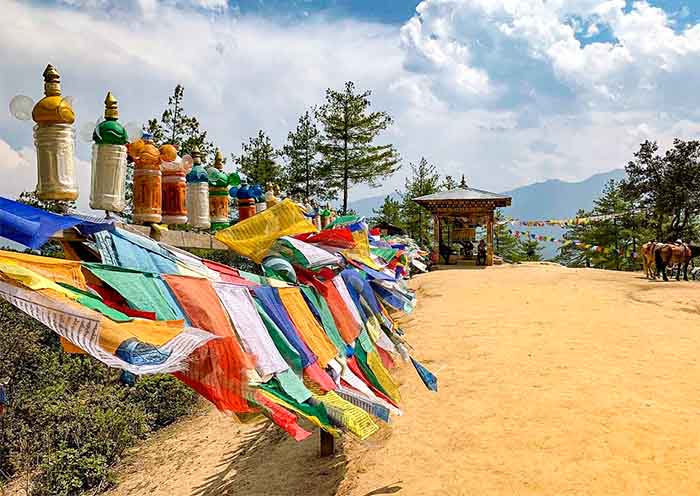


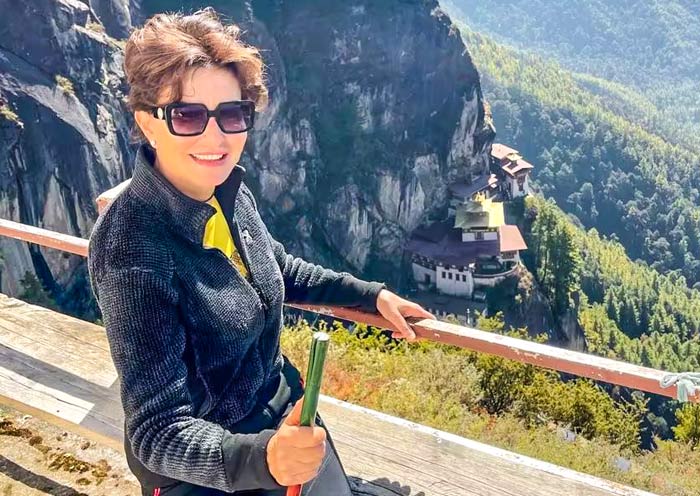
Today, we will head to Thimphu, the capital city of Bhutan, which is approximately 50km away and takes about 1.5 hours to reach. On the way, we will make a stop at Tamchog Lhakhang for a visit. Once in Thimphu (altitude 2,340m), you will have a full day of sightseeing. You can explore its rich cultural heritage such as the Buddha Dordenma Statue, National Memorial Chorten, and Tashichho Dzong. Nature lovers will love to visit the Motithang Takin Preserve to see Bhutan's national animal. Additionally, you have the opportunity to learn more about Bhutanese culture by having dinner at the Folk Heritage Museum (available for groups of over 5 people).
From Paro to Thimphu, you won't want to miss visiting the famous Tamchog Lhakhang Iron Bridge (view Tachog Lhakhang from outside only), situated by the Paro river. There, you will have the opportunity to walk across a unique iron chain bridge adorned with colorful fluttering prayer flags. Both the Lhakhang and the iron bridge were constructed by the revered saint Thangthong Gyalpo (1385 - 1464), who was renowned as the Iron Bridge Maker. Take delight in exploring his historic architectural creations that have stood the test of time. Then, you will visit the iconic landmark of Thimphu city - the Buddha Dordenma Statue (Buddha Point), which is the largest sitting Shakyamuni statue in the world. Completed in 2015, the statue embodies an ancient prophecy of radiating happiness and peace throughout the world. In addition to admiring its impressive height of 51.5 meters, constructed of bronze and gilded in gold, you will also be able to see 125,000 smaller Buddha statues placed within it. Moreover, from this vantage point, you can enjoy a magnificent view of the Thimphu Valley.
As the largest city in Bhutan, Thimphu lacks traffic lights and a railway system. When you enter the city, you can visit the National Memorial Chorten and experience it as the locals do. It is customary to follow the footsteps of the Bhutanese people and perform a clockwise kora (circumambulation) around the Chorten while offering prayers. This will provide you with numerous opportunities to engage with the locals and learn about their daily lives, as well as their philosophy on happiness.
The National Memorial Chorten is the most visited landmark in Thimphu. Constructed in 1974 in memory of the Third King, His Majesty Jigme Dorji Wangchuk (known as the Father of Modern Bhutan), by his mother, it reflects the late king's vision of promoting world peace and prosperity. The Chorten follows a Tibetan-style architecture and is adorned with remarkable paintings and intricate sculptures. You can observe the traditional stupa design, featuring a pyramidal pillar topped with a crescent moon and sun. If time permits and you have an interest in Bhutan's national animal, you can visit the Motithang Takin Preserve. There, you can observe the unique creature that is said to have been created by the legendary Drukpa Kunley (Divine Madman). According to legend, Drukpa Kunley fashioned the takin with the head of a goat and the body of a cow.
Sure, you should not miss the visit to Tashichho Dzong (Thimphu Dzong), which has served as the seat of the government since 1952. This magnificent fortress-like structure is located on the western bank of the Wang Chu River. It seamlessly integrates with the entire valley and stands as the ultimate center of power in Bhutan. It houses the offices of the current reigning monarch, the Fifth King (Jigme Khesar Namgyel Wangchuck), as well as the ministries of internal affairs and finance. Additionally, it serves as the residence of the spiritual leader of Bhutan, the Je Khenpo, and hosts the central religious institutions of the country. During the summer season, the Je Khenpo resides in the Thimphu Dzong, while in the winter season, they relocate to Punakha Dzong. Walking around the Dzong, you will discover that it is an impressively large structure surrounded by well-kept lawns and beautiful gardens. Tashichho Dzong has two main entrances. One entrance leads to the administrative section in the south, while the other, situated in the north, grants access to the monastic quarter where the Thimphu Tshechu festival and masked dances are performed.
Note: The tourist opening hours of Thimphu Dzong are from 5 PM to 6:30 on weekdays and from 10 AM to 4 PM on weekends. It is required to have a tour guide accompany you for a visit to the Dzongs. Before entering for a visit, security checks are conducted.
Finally, it's time for dinner. If there is a group of over 5 people, you can enjoy a traditional meal at the Folk Heritage Museum. The museum was established in 2001 through the initiative of Her Majesty Ashi Dorji Wangmo Wangchuck, the Queen Mother of Bhutan (Mother of the 5th King). It is housed in a three-storied, 19th-century traditional house, offering visitors a glimpse into the traditional Bhutanese lifestyle. The museum showcases artifacts from rural households, including a collection of typical household objects, tools, and equipment. After dinner, you will spend the night in Thimphu and have a restful sleep.
Optional Bhutan Thimphu Experiences:
1. Fully functional stamp printed with a self-portrait (Bhutan Post Office: Weekdays: 9AM - 5PM; Saturdays: 9 AM - 1 PM; Closed on Sundays)
2. Cooking class in Thimphu (1hour).


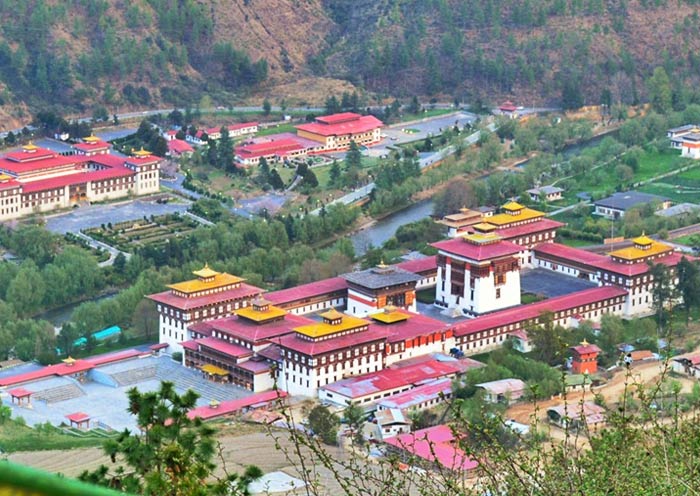
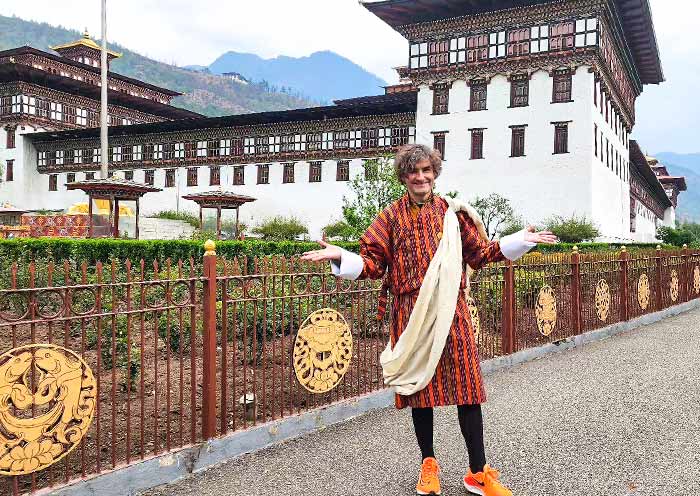
Happiness is a place, wish you had gotten your happiness philosophy from the beautiful Himalayan country with us. It is time to end your 5-day Bhutan Tour. Your guide will escort you to Paro International Airport (50km,1.5h) for your flight to your next destination.
Extension Ideas:
1.If you prefer to travel longer in Bhutan, you can extend your trip to other highlighted parts of Bhutan, such as Punakha, Gangtey, and Bumthang.
2.If you plan to continue exploring neighboring countries in Southeast Asia, the Himalaya countries, or Asia, such as Thailand, Nepal, India, or China, don't hesitate to let us know. We can customize your itinerary and assist with travel arrangements.
Thank you for choosing Asia Odyssey Travel (AOT) for your Bhutan tour, we are always here working for you and hope to see you again for your next trip to China/Asia. Safe journey!


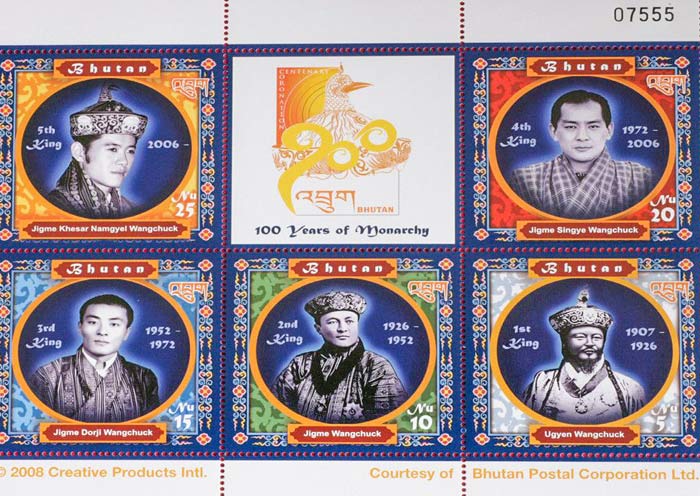

Price: What’s Included & What’s Excluded
What’s Included:
What’s Excluded:
Important Travel Tips for Visiting Bhutan
Please note that full payment of the tour fee is required 30 days before the departure date. The tour fee should be transferred to the account of the Royal Bank of Bhutan. Once the payment is received, the Bhutanese government will process your visa.
A Bhutan Group Tour typically involves traveling with a group of 1 to 12 travelers. During the tour, you will follow a set schedule and participate in activities as planned by us. The hotel arrangements for Group Tours in Bhutan are based on a 3-star level, making them more budget-friendly compared to private tours. We offer 9 group tours ranging from 4 to 11 days in duration.
On the other hand, a Bhutan Private Tour is designed to cater to your specific preferences and requirements. With a Private Tour, you have greater control over the itinerary, allowing you to customize it according to your interests and preferred pace. Additionally, you can choose the hotel condition, whether it be luxury or budget, based on your preferences. We offer Bhutan private tours with different themes, and you can choose from tours lasting 3 to 11 days.
The ideal seasons for traveling in Bhutan are from March to November, when the weather is most suitable for visitors. During the off-peak season, which lasts from December to February, it is winter in Bhutan. Daytime temperatures hover around 15 degrees Celsius, and at night, they drop below freezing. From June to September, it is the summer and rainy season, with daytime temperatures around 23 degrees Celsius and nighttime temperatures around 15 degrees Celsius.
On the other hand, the peak travel periods are from March to May and from September to November.
Bhutanese cuisine prominently features chili as its main ingredient, with most dishes incorporating cheese, potatoes, and chili. Vegetables primarily consist of legumes and tubers. If you have any dietary restrictions or special meal requirements, please inform us during the tour registration process so that we can make appropriate meal arrangements.
In the Paro region of Bhutan, staple foods include rice, buckwheat, corn, and red rice. Chili and dairy products are commonly used as accompaniments. One of the most famous traditional dishes is Ema Datshi, which consists of chili with cheese. While beef, lamb, and pork are popular meats, it's important to note that Bhutan follows Buddhist principles of non-violence and does not slaughter animals within the country. Most of the meat available in the market is imported from neighboring India and primarily caters to tourists. Beverage options include black tea, butter tea, rice wine, and beer.
Hotel Conditions for Your Bhutan Tour




In Paro, Thimphu, Punakha and other destinations in Bhutan, there are several well-positioned 4-star hotels that offer convenient access to popular attractions and ensure a comfortable stay.
1. Upgrading Hotel Accommodation: If you desire a higher standard of accommodation, our travel experts can provide you with alternative pricing options for hotel upgrades. Whether you prefer a more luxurious experience or have specific preferences, the experts will assist you in making the best choice to suit your needs.
2. Check-In and Check-Out Times: Check-in time for the hotels is generally after 14:00 (2:00 PM), allowing you to settle in and freshen up before starting your Bhutanese adventure. On the day of departure, please check out before 12:00 noon to ensure a smooth transition and allow time for the hotel staff to prepare for incoming guests.
Photo Gallery for This Itinerary
Latest Bhutan Tours Reviews from Our Customers

cindy heng
Malaysia
Date of Experience: Sep 07, 2025
Tour Customized by: Abby
You May be Interested in This Tour: Customized Tour

mui m
Vietnam
Highly recommend Asia Odyssey - they planned a fantastic itinerary against our brief for Tibet, Nepal, and Bhutan. Special shoutout to Ms. Mandy who planned our trip, answered all our questions, was incredibly responsive, and was always helpful. She checked in during our trip to make sure we were okay as well. On our trip, our local guides were knowledgeable and kind and our accommodation was comfortable. All-in-all a fantastic experience and highly recommended.
Thank you for a wonderful experience!!
Destination(s): Tibet
Date of Experience: Jun 05, 2025
Tour Customized by: Mandy
You May be Interested in This Tour: Customized Tour

Bhawani Thangaratnam
Malaysia
Date of Experience: Aug 31, 2025
Tour Customized by: Steven
You May be Interested in This Tour: Customized Tour
Price: Request
(Based on a private tour for two people. Price varies depending on program, travel date, number of people.)
Free Enquiry! You don’t need to pay for the reservation.
- United States (+1)
- Australia (+61)
- Singapore (+65)
- Malaysia (+60)
- Philippines (+63)
- Canada (+1)
- Italy (+39)
- Indonesia (+62)
- United Kingdom (+44)
- Spain (+34)
- Mexico (+52)
- Hong Kong (+852)
- Thailand (+66)
- United Arab Emirates (+971)
- New Zealand (+64)
- South Africa (+27)
- Germany (+49)
- Brazil (+55)
- India (+91)
- France (+33)
- Vietnam (+84)
- The Netherlands (+31)
- Saudi Arabia (+966)
- Ireland (+353)
- Argentina (+54)
- Switzerland (+41)
- Romania (+40)
- Pakistan (+92)
- Japan (+81)
- Portugal (+351)
- Bangladesh (+880)
- South Korea (+82)
- Puerto Rico (+1)
- Türkiye (+90)
- China (+86)
- Belgium (+32)
- Qatar (+974)
- Greece (+30)
- Taiwan (+886)
- Austria (+43)
- Poland (+48)
- Israel (+972)
- Chile (+56)
- Sri Lanka (+94)
- Nigeria (+234)
- Peru (+51)
- Colombia (+57)
- Hungary (+36)
- Nepal (+977)
- Denmark (+45)
- Bulgaria (+359)
- Norway (+47)
- Slovenia (+383)
- Sweden (+46)
- Kuwait (+965)
- Costa Rica (+506)
- Ecuador (+593)
- Venezuela (+58)
- Malta (+356)
- Croatia (+385)
- Tunisia (+216)
- Czechia (+420)
- Mongolia (+976)
- Bahrain (+973)
- Mauritius (+230)
- Papua New Guinea (+675)
- Cambodia (+855)
- Dominican Republic (+1)
- Luxembourg (+352)
- Finland (+358)
- Guatemala (+502)
- Myanmar (+95)
- Maldives (+960)
- Slovakia (+421)
- Laos (+856)
- Serbia (+381)
- Brunei (+673)
- Oman (+968)
- Macao (+853)
- Panama (+507)
- Morocco (+212)
- Jordan (+962)
- Georgia (+995)
- Fiji (+679)
- Bolivia (+591)
- Lithuania (+370)
- Bahamas (+1)
- Cyprus (+357)
- Latvia (+371)
- Bhutan (+975)
- Iraq (+964)
- Iran (+98)
- Kenya (+254)
- Jamaica (+1)
- Zimbabwe (+263)
- Azerbaijan (+994)
- Uruguay (+598)
- Estonia (+372)
- Andorra (+376)
- Cameroon (+237)
- Ghana (+233)
- Kazakhstan (+7)
- Nicaragua (+505)
- Egypt (+20)
- Russia (+7)
- Albania (+355)
- Réunion (+262)
- Montenegro (+382)
- Algeria (+213)
- Afghanistan (+93)
- Martinique (+596)
- Uganda (+256)
- Honduras (+504)
- North Macedonia (+389)
- Trinidad and Tobago (+1)
- Suriname (+597)
- Antigua and Barbuda (+1)
- Zambia (+260)
- Ukraine (+380)
- Armenia (+374)
- Barbados (+1)
- Belarus (+375)
- Palestine (+970)
- Lesotho (+266)
- Moldova (+373)
- Ethiopia (+251)
- French Polynesia (+689)
- Gambia (+220)
- Guam (+1)
- Gibraltar (+350)
- Isle of Man (+44)
- New Caledonia (+687)
- El Salvador (+503)
- Comoros (+269)
- Seychelles (+248)
- Chad (+235)
- Samoa (+685)
- Cook Islands (+682)
- Palau (+680)
- Paraguay (+595)
- DR Congo (+243)
- Solomon Islands (+677)

